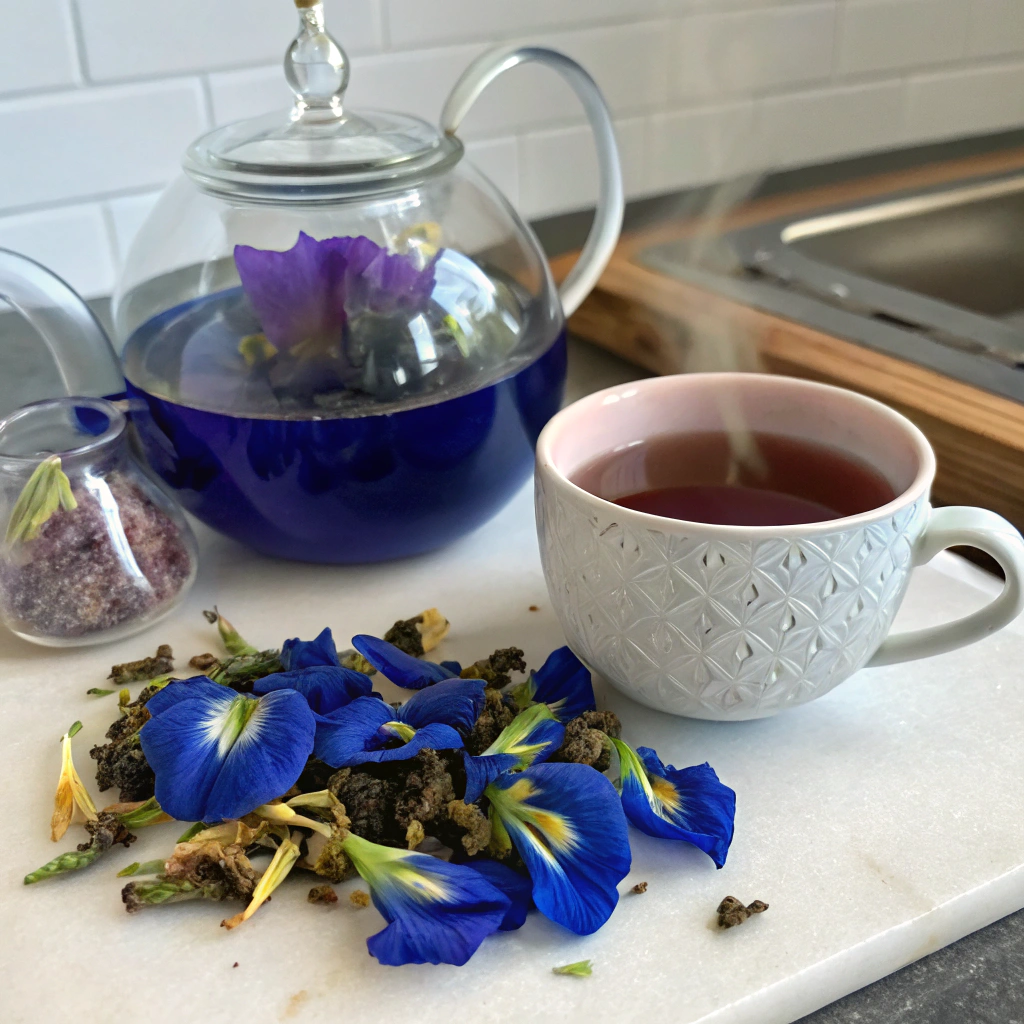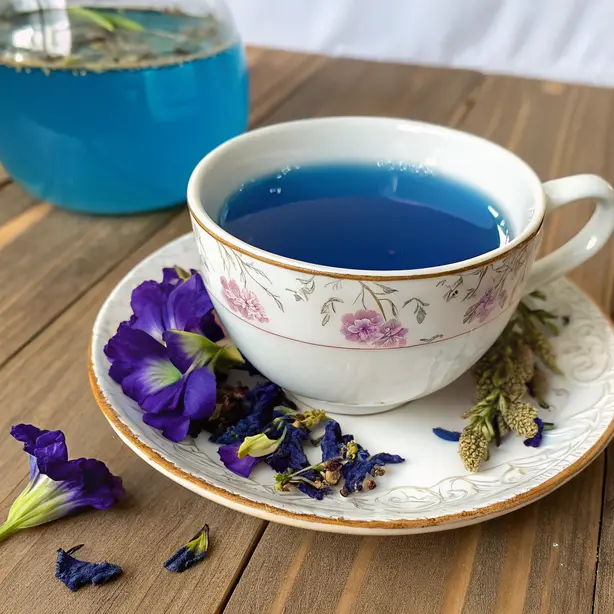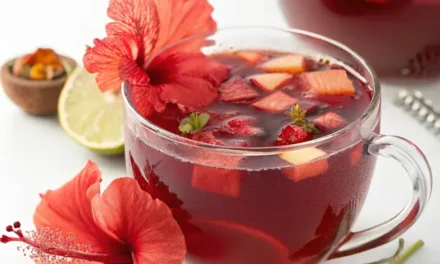Introduction
Have you ever sipped a tea that magically changes color with a squeeze of lemon, and pondered about its mysterious allure? If so, you’re likely intrigued by the phenomenon of butterfly pea tea. Revered for its vivid blue shade that transforms to purple, this Thai herbal tea is captivating both in appearance and benefits. But how does this natural beverage become a chameleon of the tea world, and what makes it an absolute must-try? Let’s delve into its secrets and unveil nature’s eye-catching infusion.
Ingredient List
Embrace the simplicity and beauty of creating butterfly pea tea, which requires minimal yet magical ingredients:
- 1 tablespoon dried butterfly pea flowers
- 1 cup of boiling water
- Honey or sugar (optional, for sweetness)
- Fresh lemon juice – an essential agent for the color change
- Optional substitutes: hibiscus flowers for an enhanced tangy flavor or mint leaves for a refreshing twist.
A visual feast awaits you. 
Time
Crafting this color-changing tea is a breeze and can be less time-consuming than you might think. From start to finish, you’ll only need about 6 minutes—a whopping 20% less than your standard herbal brews. This quick prep lets you enjoy more flavor and less waiting.
Step-by-step Instructions
Step 1: Prepare the Flowers
Boil a cup of water and pour it over the dried butterfly pea flowers in a teapot. Let them steep for 5 minutes, allowing the vibrant blue hue to develop.
Step 2: Sweeten the Deal
For those with a sweet tooth, add honey or sugar while the tea is still hot. Stir until fully dissolved, introducing a layer of sweetness that complements the floral notes.
Step 3: The Magic Transformation
Pour your visually stunning blue tea into a cup. Add a squeeze of fresh lemon juice, and watch the transformation as your tea blushes from blue to purple.
Step 4: Personalize Your Brew
Enhance your tea with a sprinkle of hibiscus flowers for additional tartness or brew with mint leaves for a refreshing finish. Experience the sensory delight with each sip.
Nutritional Information
Delve into the healthiness of butterfly pea tea: low-calorie content and rich in antioxidants. These flowers have been heralded for their potential to boost cognition and cardiac health, aligning with data from several nutritional studies. Enjoy a guilt-free beverage that supports overall well-being!
Common Mistakes to Avoid
- Over-Steeping: Leaving the flowers in for too long can result in a bitter taste. Stick to a recommended 5-minute brew time.
- Temperature Mishaps: Avoid using boiling water directly on flowers to preserve delicate flavors. Let the water slightly cool before steeping.
- Under-Flavoring: Skimping on the lemon or sweetness may dull the tea’s vibrant taste. Ensure you balance all elements to achieve desired flavor profiles.
Recipe Storage Tips
To keep this tea fresh, store the dried flowers in an airtight container away from direct sunlight. Brewed butterfly pea tea should be consumed within 24 hours for optimal taste but can be refrigerated for up to three days in a covered container.
Conclusion
With its enchanting color transformation and delightful taste, butterfly pea tea offers an adventurous twist to your tea routine. Why not brew some today and explore more nature-infused wonders? Share your experiences with us, and for further intriguing recipes, dive into our other tea tales.
FAQ
Q1: Can I drink butterfly pea tea every day?
A1: Yes, but moderation is key. While it boasts health benefits, daily consumption should be balanced with other beverages to diversify nutrient intake.
Q2: What makes the tea change color?
A2: The anthocyanins in the flowers react with acids like lemon juice, altering the tea’s color spectrum from blue to purple.
Q3: Are there any allergies associated with this tea?
A3: Allergic reactions are rare, though individuals with specific floral allergies should exercise caution.






